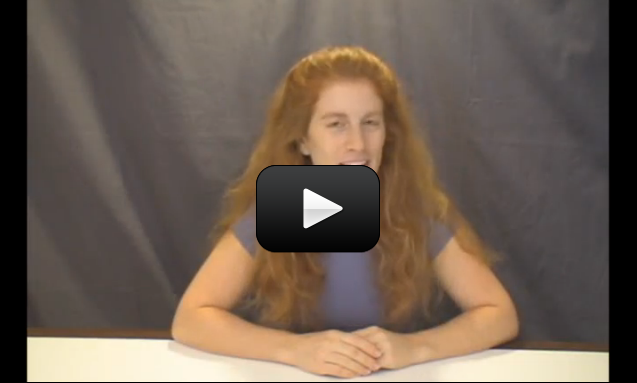When you warm up leftovers, have you ever wondered why the microwave heats the food and not the plate? (Well, some plates, anyway.) It has to do with the way microwave ovens work.
Microwave ovens use dielectric heating (or high frequency heating) to heat your food. Basically, the microwave oven shoots light beams that are tuned to excite the water molecule. Foods that contain water will step up a notch in energy levels as heat. (The microwave radiation can also excite other polarized molecules in addition to the water molecule, which is why some plates also get hot.)
One of the biggest challenges with measuring the speed of light is that the photons move fast… too fast to watch with our eyeballs. So instead, we’re going to watch the effects of microwave light and base our measurements on the effects the light has on different kinds of food. Microwaves use light with a wavelength of 0.01 to 10 cm (that’s ‘microwave’ part of the electromagnetic spectrum). When designing your experiment, you’ll need to pay close attention to the finer details such as the frequency of your microwave oven (found inside the door), where you place your food inside the oven, and how long you leave it in for.
Materials:
- chocolate bar (extra-large bars work best)
- microwave
- plate
- ruler
- calculator
- pencil and paper
[am4show have=’p8;p9;p11;p38;p92;p19;p46;p89;’ guest_error=’Guest error message’ user_error=’User error message’ ]
Download Student Worksheet & Exercises
First, you’ll need to find the ‘hot spots’ in your microwave. Remove the turntable from your microwave and place a naked bar of chocolate on a plate inside the microwave. Make sure the chocolate bar is the BIG size – you’ll need at least 7 inches of chocolate for this to work. Turn the microwave on and wait a few minutes until you see small parts of the chocolate bar start to bubble up, and then quickly open the door (it will start to smoke if you leave it in too long). Look carefully at the chocolate bar without touching the surface… you are looking for TWO hotspots, not just one – they will look like small volcano eruptions on the surface of the bar. If you don’t have two, grab a fresh plate (you can reuse the chocolate bar) and try again, changing the location of the place inside the microwave. You’re looking for the place where the microwave light hits the chocolate bar in two spots so you can measure the distance between the spots. Those places are the places where the microwave light wave hits the chocolate.
Open up the door or look on the back of your microwave for the technical specifications. You’re looking for a frequency in the 2,000-3,000 MHz range, usually about 2450 MHz. Write this number down on a sheet of paper – this tells you the microwave radiation frequency that the oven produces, and will be used for calculating the speed of light. (Be sure to run your experiment a few times before taking actual data, to be sure you’ve got everything running smoothly. Have someone snap a photo of you getting ready to test, just for fun!)
When you’re ready, pop in the first food type on a plate (without the turntable!) into the best spot in the microwave, and turn it on. Remove when both hotspots form, and being careful not to touch the surface of the food, measure the center-to-center distance using your ruler in centimeters.
TIP: If you’re using mini-marshmallows or chocolate chips (or other smaller foods), you’ll need to spread them out in an even layer on your plate so you don’t miss a spot that could be your hotspot!
How to Calculate the Speed of Light from your Data
Note that when you measure the distance between the hotspots, you are only measuring the peak-to-peak distance of the wave… which means you’re only measuring half of the wave. We’ll multiply this number by two to get the actual length of the wave (wavelength). If you’re using centimeters, you’ll also need to convert those to meters by dividing by 100.
So, if you measure 6.2 cm between your hotspots, and you want to calculate the speed of light and compare to the published value which is in meters per second, here’s what you do:
2,450 MHz is really 2,450,000,000 Hz or 2,450,000,000 cycles per 1 second
Find the length of the wave (in cm): 2 * 6.2 cm = (12.4 cm) /(100 cm/m) = 0.124 meters
Multiply the wavelength by the microwave oven frequency:
0.124 m * 2,450,000,000 Hz = 303,800,000 m/s
Published value for light speed is 299,792,458 m/s = 186,282 miles/second = 670,616,629 mph
Click here to learn how to turn this project into a Science Fair Project you can enter!
Exercises
- What would happen if you used cheese instead of chocolate?
- Does it matter where in the microwave the chocolate is located? Does placement of the chocolate affect the wavelength?
- Can you explain what the burn marks on the chocolate bar are from?
[/am4show]


First: find the difference between the two numbers you are comparing. Next, divide the difference by the original published number (this is the value of the speed of light) and multiply the answer by 100. Does that help?
i dont know how to get the percentage.can you help?
totally chose chocolate! lol This is a really cool (and yummy) experiment 😉